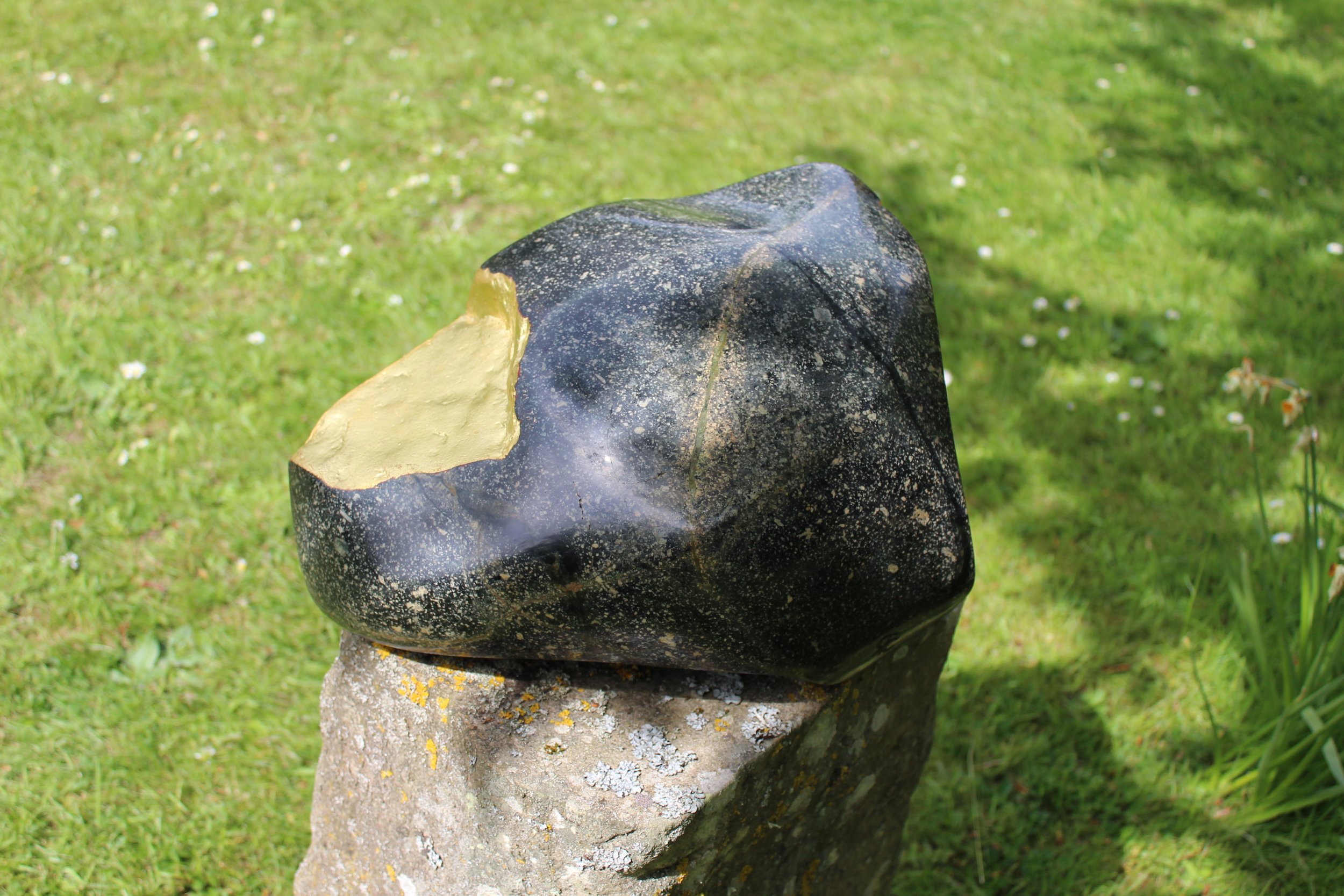Antropocene erratic (explanation)
Nonglacial erratics
In geology an erratic is any material which is not native to the immediate locale but has been transported from elsewhere. The most common examples of erratics are associated with glacial transport, either by direct glacier-borne transport or by ice rafting. However, some erratics have been identified as the result of kelp holdfasts, which have been documented to transport rocks up to 40 centimetres (16 in) in diameter. Others are rocks entangled in the roots of drifting logs, and some are transported having been accumulated in the stomachs of seals during foraging.
Anthropocene Erratics
adjective: Anthropocene
1. relating to or denoting the current geological age, viewed as the period during which human activity has been the dominant influence on climate and the environment.
As well as the Glacial and non-glacial erratics, I would add erratics of the anthropocene. Having been in and around the stone industry I have seen the rising globalisation of the movement of stone. Precious stones and stone artifacts have always been moved around by humans: a jewel or good stone tool would be moved along with nomadic tribes. Jadeite ceremonial axes are found all around Europe. There was trade in rocks containing metal ores, the location of these stones would create new trade routes and a rise in status of the people with knowledge about the stone’s location and extraction.
Then there was the moving of larger stones for ceremonial purposes. The time and effort put into the moving of the pillars for Stonehenge would have been
extraordinary. As time marched on and society made steady progress, certain minerals were put to new uses. The prohibitive cost and logistics of moving heavy weights around meant that only economically and industrially precious stone was moved long distances. Building stone was nearly always locally sourced and exotic imports of decorative stone would be kept to a minimum unless great show of wealth was required, for example in Cathedrals and Palaces. The rise of industrial revolution saw the first mass movement of stone. The use of stone as ballast in shipping saw the moving of stone around the planet in ever greater quantities. Unlike glacial and natural erratics, anthropocene erratics are selective.
When I started in the memorial trade at the beginning of the 1980’s, local stone was still used where possible as imports were still classed as expensive. The two main sources of import were Italy for white marble and India for black granite. Until that point Swedish Bonaccord black granite was the most expensive and finest quality black granite, closely followed by first quality Indian and at times South African black granite. Apart from the European sources the stones were empire imports. 35 years on there is a choice of decorative stones from all around the world and it is available in abundance thanks to modern extraction techniques, tooling and transportation. In my workshop I have stone from all corners of the British Isles plus specimens from Brazil, China, Venezuela, India, Africa, Afghanistan, North America, Russia, Norway Italy, France and Spain.
These anthropocene erratics have mingled with the glacial erratics I have collected. By selecting glacial erratics and relocating them from my studio I transform them into anthropocene erratics.




